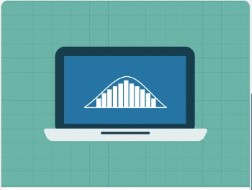Intermediate Regression in R
Learn to perform linear and logistic regression with multiple explanatory variables.
Course Description
Linear regression and logistic regression are the two most widely used statistical models and act like master keys, unlocking the secrets hidden in datasets. This course builds on the skills you gained in “Introduction to Regression in R”, covering linear and logistic regression with multiple explanatory variables. Through hands-on exercises, you’ll explore the relationships between variables in real-world datasets, Taiwan house prices and customer churn modeling, and more. By the end of this course, you’ll know how to include multiple explanatory variables in a model, understand how interactions between variables affect predictions, and understand how linear and logistic regression work.
What You’ll Learn
Parallel Slopes
Extend your linear regression skills to “parallel slopes” regression, with one numeric and one categorical explanatory variable. This is the first step towards conquering multiple linear regression.
Multiple Linear Regression
See how modeling, and linear regression in particular, makes it easy to work with more than two explanatory variables. Once you’ve mastered fitting linear regression models, you’ll get to implement your own linear regression algorithm.
Interactions
Explore the effect of interactions between explanatory variables. Considering interactions allows for more realistic models that can have better predictive power. You’ll also deal with Simpson’s Paradox: a non-intuitive result that arises when you have multiple explanatory variables.
Multiple Logistic Regression
Extend your logistic regression skills to multiple explanatory variables. Understand the logistic distribution, which underpins this form of regression. Finally, implement your own logistic regression algorithm.
User Reviews
Be the first to review “Intermediate Regression in R”
You must be logged in to post a review.






There are no reviews yet.